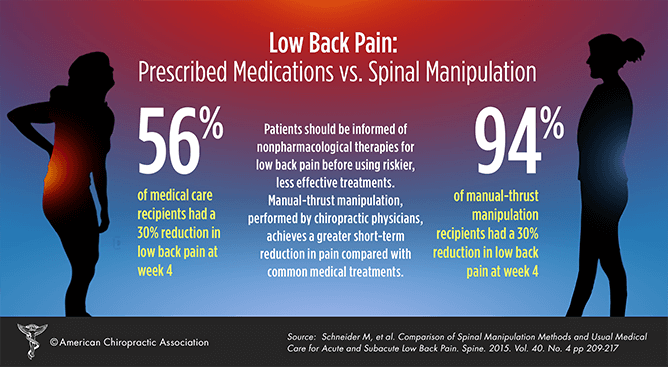Did You Know This About Low Back Pain?
To download a copy of this newsletter, please click here.
Clear Lake Chiropractor Comments: If you have low back pain (LBP), you are certainly not alone. Almost everyone at some point has back pain that interferes with work, daily activities, and/or recreation. Americans spend at least $50 billion each year on LBP. It is the most common cause of job-related disability and a leading contributor to lost work time. Back pain is second to headaches as the most common neurological condition in the United States. Fortunately, most occurrences of LBP go away within a few days. Others take much longer to resolve or lead to more serious conditions (1).
There are two types of low back pain – acute and chronic. Most episodes of acute LBP last from a few days to weeks, are not neurological and usually do not carry a high level of surgical risk. The 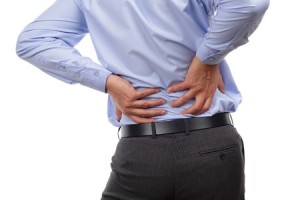 cause of LBP can be difficult to isolate because often, while the cause is cumulative where multiple events over time, the last activity the patient recalls is “bending over for a pencil.” This, by itself is not likely to cause an acute onset of LBP. Low back pain can be caused by trauma such as sports injuries, work around the house such as garden work, car accidents, and others. Chronic low back pain, by definition, is LBP that lasts more than 3 months and the cause can be more difficult to identify and is often cumulative and superimposed on a prior condition such as degenerative disk or joint disease. A real problem is the rate of recurrence or, chronic, recurrent low back pain where pain may subside but returns at various rates of frequency and duration. This category affects a high percentage of the population and represents the true challenge in spine care management.
cause of LBP can be difficult to isolate because often, while the cause is cumulative where multiple events over time, the last activity the patient recalls is “bending over for a pencil.” This, by itself is not likely to cause an acute onset of LBP. Low back pain can be caused by trauma such as sports injuries, work around the house such as garden work, car accidents, and others. Chronic low back pain, by definition, is LBP that lasts more than 3 months and the cause can be more difficult to identify and is often cumulative and superimposed on a prior condition such as degenerative disk or joint disease. A real problem is the rate of recurrence or, chronic, recurrent low back pain where pain may subside but returns at various rates of frequency and duration. This category affects a high percentage of the population and represents the true challenge in spine care management.
As people age, their bone strength and muscle stretch, strength and tone usually decreases due to lack of activity. When the disks begin to lose fluid and flexibility, their ability to cushion the vertebrae and function as “shock absorbers” also decreases. Disks can tear, bulge, and/or herniate which results in localized LBP and/or radiating pain that follows the course one or more of the 31 pairs of nerve roots (eg., “sciatica” down the back of the leg). Soft tissues such as joint capsules and ligaments lose their capacity to stretch and can tear more easily, resulting in a sprain or strain (muscle/tendon injury). Other conditions that either cause or contribute to LBP include arthritis, obesity, smoking, pregnancy, stress, poor posture and/or physical health, and can lead to unsatisfied patients if these co-contributors are not properly identified and discussed. Less commonly, LBP can be caused by a more serious condition such as cancer, fracture, infection, spinal cord compression, and various internal conditions (3). Emergency care may be indicated in these circumstances.
At Beecher Chiropractic, we will perform a complete examination, consider other contributing causes, and will treat the problem(s) causing the LBP condition. If needed, working with other allied health care providers will be arranged. Exercise, dietary recommendations, ergonomic or work modifications, spinal manipulation, and modalities will all be considered to help eliminate or control of the LBP. Methods of self-managing the LBP will be emphasized.
Dr. Ward Beecher practices at Beecher Chiropractic Clinic at 1001 Pineloch, Ste 700 Houston, TX 77062. You can schedule an appointment at BeecherChiropractic.com or by calling (281) 286-1300. If you have any questions regarding this blog, please comment below!
Do You Really Need an X-Ray if You Have Back Pain?
Chiropractor Near Clear Lake City Comments: Most chiropractic patients have spine x-rays taken of their lumbar. Since x-rays do carry a very small risk of tissue damage, this risk needs to be outweighed by benefits. So, how are x-rays used in our clinic?
First, spine x-rays can tell us about medical conditions that may require referral to another health care provider such as a spine tumor or an infection. Fortunately, these diseases are very rare, but they do need to be considered in every patient, especially those who may have certain “red flags” such as back pain at night or rest, or if there is also a fever. In addition, certain severe traumas (like a fall) can produce fractures. In an older adult with osteoporosis, or someone taking steroid medications over years, even a minor trauma event can be enough to cause a break, because the bone is in a weakened condition.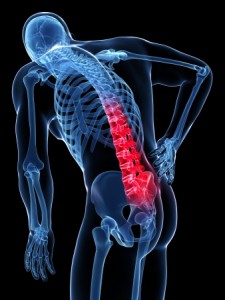
After these very rare conditions are ruled out, your x-rays can provide important information about your anatomy and physical posture. For example, curvatures of the lumbar spine, such as scoliosis, are virtually undetectable without a spine x-ray, and without these you would not know if you would need scoliosis treatment. If we know how your spine is deviated, this information can help direct the adjustment more specifically. Sometimes leg lengths are uneven and a person may require an orthotic (arch support) or heel lift to level the foundation for your spine. About one in ten patients will have an unequal leg length of a centimeter or more.
In terms of the bone anatomy, x-rays can show the planes and angles of the discs between bones and whether any degeneration is present or if you have any herniated discs. If the degeneration is advanced, then a natural bone fusion may be present. It should be obvious that if the spinal anatomy does not allow movement or if the joints are literally fused movement is impossible, then chiropractic adjustments are not appropriate.
Spine x-rays can also show us how one area of the spine mechanically compensates for a deviated area below. Sometimes, pain may be present at compensatory areas but without knowledge of the cause of this deviation, care may be less optimum. Just as the lumbar spine may compensate for a pelvic problem, so to can a neck condition be caused by abnormal postural lower down the spine. The x-rays can show us how case management needs to be altered to reflect your individual needs.
In any case, x-rays are important to reach an accurate diagnosis, which is the first step on the road to recovery and regaining your vitality and quality of life.
Dr. Ward Beecher practices at Beecher Chiropractic Clinic at 1001 Pineloch, Ste 700 Houston, TX 77062. You can schedule an appointment the best chiropractor in houston by calling (281) 286-1300. If you have any questions regarding this blog, please comment below!
Is Low Back Pain Serious?
To download a copy of this week’s newsletter, please click here.
Clear Lake Doctor of Chiropractic Comments: Back problems can cause a good deal of worry and for good reason. Any problem that doesn’t go away on its own in a reasonable period of time should be a cause for concern. Rarely, severe low back pain can be caused by tumors and other destructive processes, so it’s important to have these serious conditions ruled out with a thorough examination and x-rays or other imaging.
The other serious aspect of back pain, much more common than a spinal cord tumor, is how it can affect your quality of life, often with devastating consequences.
Research has shown how disabling severe back problems can be. In terms of quality of life, the decrease can be even more than that seen with heart and lung problems.
This may not seem correct at first glance, but if you think about a back problem making you unable sit or function at work, or basically being able to enjoy life, then it becomes more understandable.
The trouble is, many of us think lying on the couch will do the trick, or taking aspirin every day is a good long-term solution.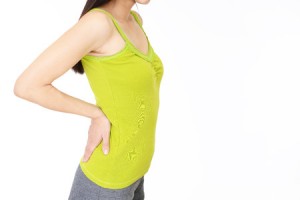
Sprain subluxations that displace the joints of your spine are sometimes referred to as mechanical disorders. These can be detected by analyzing how your spine moves in a precise manner. Sometimes x-rays can show displacements of the lumbar vertebrae or pelvic bones. X-rays are taken from two angles to see the alignment of the spinal joints. X-rays can also show bone destructive or degenerative processes that help to diagnose your problem, and show if adjustments are indicated.
We direct our care at improving the posture and mobility of the spine as a way to speed recovery. We find that just addressing the pain with medications or adhering to strict bed rest can be counter productive. The adjustments are applied in a careful and specific manner. As the loads on the spine are more equalized and as joints begin to exhibit more flexibility, the body is placed in a more optimal environment for healing. Since self-care is also integral to our approach, we will encourage proper stretching and exercises to help maintain and extend what we can do in the clinic.
Dr. Ward Beecher practices at Beecher Chiropractic Clinic at 1001 Pineloch, Ste 700 Houston, TX 77062. You can schedule an appointment at BeecherChiropractic.com or by calling (281) 286-1300. If you have any questions regarding this blog, please comment below!
Low Back Pain: Could Your Feet or Hips Be at Fault?
To download a copy of this newsletter, please click here.
Houston Chiropractor Comments: The body is an interconnected whole and needs to be looked at as such in order to get at the root of a spinal problem. We are all familiar with low back trauma, bending and stooping in awkward positions to lift something from a trunk, or the slip and fall on ice. In these examples, it’s easy to see how the trauma preceded the low back pain.
But sometimes pains in the low back are not so easy to figure out. One area of the spine could be compensating in posture for another, inhibiting a vertebral joint’s ability to fully recover. Or maybe you’re suffering from the cumulative affects of microtrauma over time.
Such is the short leg; about 1/10 people will have an anatomic difference in leg length of up to one centimeter. This short leg causes the pelvis to incline to one side providing an uneven support for  the base of your spine. It’s a little like walking with one foot in a small ditch. The uneven pelvis then causes a lumbar scoliosis, which must be further compensated from above.
the base of your spine. It’s a little like walking with one foot in a small ditch. The uneven pelvis then causes a lumbar scoliosis, which must be further compensated from above.
But a short leg can also be functional, due perhaps to a small or collapsed arch of the foot. This can account for up to 5 mm of leg length difference. Do you have a history of having flat feet or have you ever sprained one of your ankles? The sprained ankle can damage ligaments to such a degree that the normal arch of the foot can no longer be maintained.
Depending on the degree of the problem we may be able to help your low back pain by correcting a problem in the foot. Many in-shoe orthotics are available to correct a fallen arch. If the problem is very severe, you may also need a visit to a podiatrist.
In any case, it’s important to consider the foundation of a spinal problem, and it can be as simple a problem as bad foot posture that is affecting how your low back functions. Also, problems in the sacroiliac joint or hips can affect how the lower spine moves.
So pay attention to where the pain is located, but also consider that other joints nearby may be affecting your recovery as well.
As a doctor of chiropractic, my office is fully equipped to handle problematic low back conditions that don’t seem to clear up in response to what you’ve tried in the past. Have your feet been checked? Has someone looked at your posture carefully?
Dr. Ward Beecher practices at Beecher Chiropractic Clinic at 1001 Pineloch, Ste 700 Houston, TX 77062. You can schedule an appointment at BeecherChiropractic.com or by calling (281) 286-1300. If you have any questions regarding this blog, please comment below!
Low Back Pain and the Hamstrings
To download a copy of this week’s newsletter, please click here.
Houston Chiropractor Comments: Have you ever considered how important your hamstrings muscles are in relationship to the low back? Most people do not think about those tight muscles on the back of the upper leg / thigh as having much to do with low back pain (LBP). However, it is one of the most important muscles groups to keep loose both as a means of improving current low back trouble as well as preventing future LBP. Think of the hamstrings as a stabilizing guide wire that keeps us upright. When we bend over with our knees straight, we can feel the hamstrings gradually tighten, often limiting us from reaching our toes. When the hamstrings are too tight, some of us can hardly reach past our kneecaps as we bend over. We then (unconsciously) bend our knees to put slack in the hamstrings so we can easily reach the floor.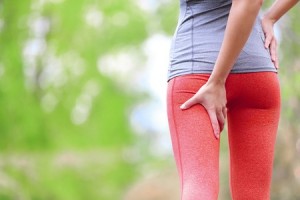
The low back is only so flexible and in reality, most of our ability to touch our toes comes from our hip joints. In fact, after scoliosis surgery where metal rods are placed on both sides of the spine, these patients will often make up for the loss of low back movement by increasing hip motion and still be able to touch their toes! This, however, can only be accomplished if the hamstrings are stretched to a point of allowing the hips and pelvis to rotate forwards when bending with the knees straight.
So, what happens if the hamstrings are too tight? Think of a young sapling tree branch versus an old oak branch. When bending the two branches, the young sapling can easily bend, while the old oak branch breaks early into the process. Similarly, as we bend over to lift a box, when the back and leg muscles, ligaments, and tendons are tight, something has to give or “break,” similar to the old oak branch. The “weak link” in the injured person bending over may be a disc that ruptures, ligaments and/or muscle tendons that overstretch and tear. By keeping the hamstrings loose (like the young sapling branch), much less force is placed on the spine because the pelvis can rock forwards during the bending process, thus unloading the spine. Another way to look at it is that when the hamstrings are too tight, something else has to be correspondingly loose to make up for the tight hamstrings or else the task of bending forwards and performing daily tasks will be limited.
Tissues in our back are injured when forces exceed their capacity to withstand the load. By keeping our hamstrings stretched, we reduce the need for our spine to have to make up for the tightness; thus both preventing a new injury, as well as perpetuating a current problem. The best way stretch the hamstring’s is to sit down on the ground with one leg out straight and the other heel pulled towards your groin. Try and touch your toes with the toes pointed out, up and then in. Maintain that position for at least 10 and then switch legs and do it 3 times each side. Because the hamstrings tighten up during sleep, it’s usually best to perform the stretch in the morning. Repeating this multiple times a day may be required to obtain proper hamstring muscle length. Exercise training is a routine part of chiropractic care!
If you, your family, or a friend is struggling with low back pain, sharing this information may be one of the greatest acts of kindness you can give to that person. At this clinic, we strive to provide the highest quality care and follow evidence and “best practice” approaches. We greatly appreciate the trust that our patients place in us and our services as we help them recover as well as teach ways to prevent future LBP episodes.
Dr. Ward Beecher practices at his Houston Chiropractic Clinic at 1001 Pineloch, Ste 700 Houston, TX 77062. You can schedule an appointment at BeecherChiropractic.com or by calling (281) 286-1300. If you have any questions regarding this blog, please comment below!
Low Back Pain and its Many Causes
To download a copy of this week’s newsletter, please click here.
Clear Lake City Doctor of Chiropractic comments: Low back pain (LBP) is one of the most common complaints presenting to our office and remains one of the most challenging conditions to manage because there are so many causes of LBP. Some of the causes include the obvious such as over lifting, over use activities such as sports injuries (bowling, golfing, skiing, tennis, football, 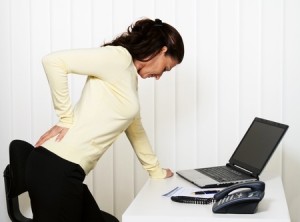 etc.), raking leaves, shoveling mulch, and more. Frequently, work related strains are the primary cause of LBP due to the constant, persistent and awkward positions frequently required in many jobs, especially in repetitive motion assembly line work.
etc.), raking leaves, shoveling mulch, and more. Frequently, work related strains are the primary cause of LBP due to the constant, persistent and awkward positions frequently required in many jobs, especially in repetitive motion assembly line work.
The cause can also be as simple as standing on 2 feet vs. 4 feet. Studies show when 2 legged and 4 legged animals are compared, arthritis starts in the 3rd vs. the 6th decade of life, respectively due to the vertical load placed on the biped or 2-legged animal. In spite of this, after sharing this information with patients, I have not been successful in convincing them to start walking on all fours! Because we are a 2-legged species, addressing a short leg can have significant benefits to any spinal condition. This is because a short leg of only 5mm (1/4 inch) can result in a drop in the pelvis resulting in crooked foundation that the spine sits on, creating a curvature in the spine. This places stress on the spinal components including the spinal cord and nerves and can contribute or be the actual cause of not only LBP, but also problems higher in the spine including neck pain and headaches!
Every now and then a satisfying outcome is not achieved until I address the leg length issue by the use of heel or a combination of heel & sole lifts. If a leg is short, the effects at the top – that is, the neck and head, are dramatically affected. In one case, treatment to the neck and head had little effect on his headaches and only after placing a heel lift in one shoe and arch support in both shoes did he feel significantly improved.
In most cases, treatment addressing the entire body from the feet up yields the most satisfying results. Also, secondary issues such as diet, stress management, home treatments including exercises, can be very important in the successful management of back pain. In many patients, a combination of chiropractic, leg length correction, and nutritional management including the use of vitamin and herbs resulted in the best approach results.
Usually, offering the patient advice on the methods of applying ice, modifying/reducing bending/ lifting activities, as well as performing the chiropractic treatment will satisfy the majority of patients. However, in some cases, co-management with other allied health care providers is necessary, especially where there is a slow response in the initial acute stage of LBP. If these less common cases should occur, the combination of chiropractic and primary care yields the best results.
Dr. Ward Beecher practices at Beecher Chiropractic Clinic at 1001 Pineloch, Ste 700 Houston, TX 77062. You can schedule an appointment at BeecherChiropractic.com or by calling (281) 286-1300. If you have any questions regarding this blog, please comment below!
Low Back Pain: An Ice Pack or the Hot Tub?
To download a copy of this week’s newsletter, please click here.
Back pain doctor comments: Many patients do some self-care when they first hurt their lower back, hoping this will keep them out of a doctor’s office. Home remedies sometimes make the pain go away and sometimes they don’t. It depends on what you try. When the back is first hurt, it’s often a sprain/strain type of injury with accompanying muscle spasm. When a nerve in the low back gets pinched or irritated, the body will protect the delicate nerves by keeping you from moving and risking further nerve injury. The easiest way for the body to do this is to cause the back muscles to spasm and splint the injured area.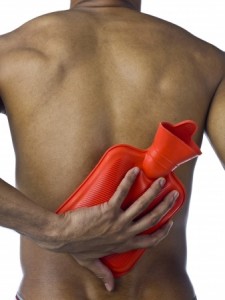
Is Heat or Cold Better for Lower Back Pain?
Muscle pain can be quite severe and heat can sometimes soothe muscle pain. For this reason, many patients take to the heating pad or the hot tub to try and get some relief. This should be avoided in an acute injury because inflammation is present. With inflammation, there is increased heat and the additional heat you provide is like adding gasoline to a fire. The results are usually not good. You will probably feel good for 20-30 minutes and then the pain will return.
A better choice with an acute injury is to ice the area, but this also needs to be done with some caution. The simplest ice pack is ice cubes placed in a plastic bag. While effective, you can cause a frostbite injury if you leave the pack on for too long. When you first ice the area, you will go through several phases before some pain relief is achieved. At first the pack will feel cold. The next phase is a burning sensation and the ice will almost feel hot. This is followed by an aching or throbbing sensation. Just before the area is numbed, a very sharp pain will be experienced followed by the relief you desire. This can take from five to ten minutes to go through all of the phases. Once numbness is achieved, the pack should be removed. This will be about 20 minutes. You should most definitely not fall asleep while the pack is on.
Treatment for Lower Back Pain in Houston
If this simple procedure does not solve the problem, it’s best to get your spine checked by a doctor of chiropractic.
Dr. Ward Beecher practices at Beecher Chiropractic Clinic at 1001 Pineloch, Ste 700 Houston, TX 77062. You can schedule an appointment at BeecherChiropractic.com or by calling (281) 286-1300. If you have any questions regarding this blog, please comment below!
Low Back Pain: Fix the Problem and You Won’t Need to Worry About the Pain
To download a copy of this newsletter, please click here.
Houston Chiropractor Comments: It’s gotten a bit confusing how we sometimes look at our health. When pain strikes the low back we usually think we just got a new problem or injury. But why then was coughing, shaving, or doing the laundry, so different this time? These are things we do everyday. Rarely is a new episode of low back pain brought on by a well-defined injury or trauma. Trauma in most cases is usually quite trivial. We confuse pain as a signal for something that is physically changing each time.
So what is the problem? The problem is joint sprain or subluxation. This is a ligament problem and occurs with small micro traumas over many years, or sometimes with acute events such as car accidents or falls. Over time the ligaments stretch, causing the joints and vertebrae to displace, irritating the delicate nerve fibers. But over a few days or weeks, the pain that accompanies this injury gradually lessens, and in many cases goes away all on its own. But has the problem also gone away? Likely not, because when ligaments are traumatized, the repair mechanism involves scar tissue, which is less elastic than the original, and makes the joint vulnerable to re-injury and sometimes, impairs the free and symmetrical motion of the spine. The doctor of chiropractic examines for this type of joint sprain using palpation for tenderness and edema, and x-rays to see the directions the vertebrae have moved towards. These specific analyses can tell us the vulnerable directions and how the vertebrae need to be repositioned to promote good alignment and good posture.
The adjustment is designed to reduce this misalignment, and induce more symmetric motion. When movements are asymmetrical in the spine, they can lead to premature degeneration of the spine and arthritis. This may be why a simple task such as lifting a laundry basket can flare up the back so easily. You may be lifting with good form and posture but with an asymmetrical spine, the loading is very off balance. Sometimes the disks are so damaged that a simple sneeze is enough to cause excruciating pain. So when these trivial events seem to trip you up, it means there is an underlying problem that is not getting corrected.
Dr. Ward Beecher practices at Beecher Chiropractic Clinic at 1001 Pineloch, Ste 700 Houston, TX 77062. You can schedule an appointment at BeecherChiropractic.com or by calling (281) 286-1300. If you have any questions regarding this blog, please comment below!
The Effectiveness of Spinal Manipulation for Treating Low Back Pain
For many people seeking relief from pain in the lower back, their first point of contact is with a medical doctor who prescribes pain medications. However, those who seek treatment from a chiropractor are more likely to experience a significant reduction in pain than those who take prescribed medications for pain, according to a study conducted by the American Chiropractic Association.
If you suffer from pain in your lower back, contact Beecher Chiropractic today for the relief you need. Chiropractic treatment is safe, highly effective and appropriate for just about everyone. To learn more, please call 281-286-1300 to schedule a consultation with Dr. Ward Beecher, your Houston chiropractor.
Low Back Pain vs. a Low Back Problem: Is There a Difference?
To download a copy of this newsletter, please click here.
Chiropractor near NASA comments: Your “back pain pain” might be a misnomer. We often confuse pain for a problem. Doctors often don’t help matters by not doing thorough examinations, and just offering a prescription of pain pills or anti-inflammatory drugs when the patient comes in with a complaint of pain.
So what is the difference? The pain is part of the problem you are experiencing, but it is not the actual cause-the problem that is producing the pain. If you say you have back pain to a doctor, this should be the starting point for a complete examination to determine its cause. Is it a problem with the disk (a cartilage ligament that separates the vertebrae)? Is the problem more a muscle strain? Do the joints of the spine move in a free and symmetrical pattern?
Have you been examined this way? Was your spine moved around in different planes? Did the doctor poke and press on different tissues of the spine to see if there was swelling (inflammation) or tenderness? Were x-rays taken to see if there was normal alignment and good posture of your spine?
All of these tests help to determine the actual nature of the problem. It’s not enough to just call the pain the problem and leave it that. Sadly, this happens to far too many patients who are left thinking that if they just take something to cover up the pain, it makes the problem go away.
Our clinic is different, we examine to find the cause of your pain, and then provide a treatment plan that can get you back to enjoying your activities with maximum function. If your pain is gone but you still cannot use your back like you used to, then you might want to consider an alternative approach.
Of course, taking pain pills for long periods of time can also lead to undesired side effects such as stomach bleeding. We are very conditioned in society to accept pills as the source of health and longevity. For many patients they are critical to regaining health, but too often they are used as a panacea, especially when it comes to back pain. You should ask questions about a doctor’s approach to getting you well, and whether this fits with your philosophy and preferences.
Dr. Ward Beecher practices at Beecher Chiropractic Clinic at 1001 Pineloch, Ste 700 Houston, TX 77062. You can schedule an appointment at BeecherChiropractic.com or by calling (281) 286-1300. If you have any questions regarding this blog, please comment below!

